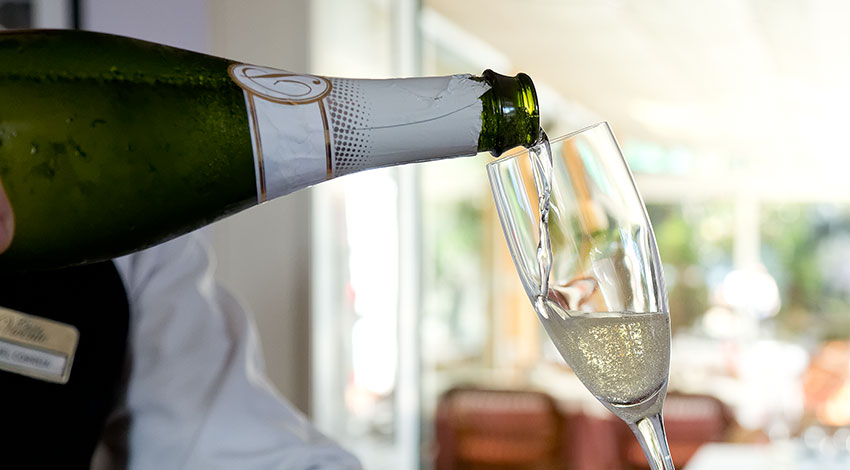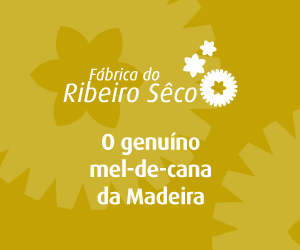Sparkling Wines are perhaps the last wines to see a revolution of quality in Portugal.

Bit by bit, Portuguese wine has improved to become a name on everyone's lips across the globe. At one point, it seemed that its 15 minutes of fame were up, but it has exploded once again: with three of the four top wines listed in Wine Spectator's top 100 for 2014, including first place, the spotlight is on Portuguese wines. The grapes and the locations have always been there, with vineyards cropping up here and there.
There has been huge investments and improvements founded on deeper k now ledge, and oenology stepped up to the plate, with training, contacts and international internships, experiments and ambition. With the old vines gradually establishing their value and restructured vineyards reaching their full potential as they reach adult age, this is the best time ever for Portuguese wine. Without a doubt, focus is now on quality; the days when quantity was key are long gone.
This revolution owes much to technology, although much of the scientific stuff en compasses understanding many of the old methods that were completely correct the best solution for each terroir had already been discovered long ago. And so, successively, Port wines began to improve, then the reds, then the whites – more demanding in terms of production –, then the rosés and, finally, we reach the Portuguese sparkling wine, the espumante, which has the same technical difficulties of the whites and rosés but with the added sparkling process.
The espumante requires a special process to add carbon dioxide gas and complexity to the so-called base wine. All fermentations release carbon dioxide, and when the secondary fermentation occurs in the base wine in an enclosed atmosphere, the gas has nowhere to go and is incorporated in the wine, causing a fine, frothy bubble which is called a mousse. When this enclosed environment is the bottle itself, this method is called 'classic' and is the same as the one used in the Champagne region. Amongst the technological innovations that allowed Portuguese wines to improve so much is actually a Portuguese invention. Around two decades ago, biotechnology company Proenol managed to industrialise a process of encapsulating the yeast that's responsible for the second fermentation.
According to Proenol, instead of adding wild yeast, this method has “huge advantages such as the reduction of labour and production time, the removal of the inoculum preparation stage, the direct inoculation of the yeast, as well as the quick removal of the yeast”. In practice, thanks to the encapsulated yeast, producing a sparkling wine, which once required long storage in the cellar and long-winded, expensive processes, became faster and cheaper. But at what cost? According to Osvaldo Amado, chief winemaker at Dão Sul, none, as long as the sparkling wines are aged for a maximum of 18 months. Amado undertook exhaustive testing during the 15 years he worked at Caves Primavera and has used the encapsulated yeast since the early 1990s.
From the annual total of 400,000 bottles, he always did controlled experiments of at least 5%, i.e. 20,000 bottles, and confirms the advantages claimed by Proenol. Besides that, the fact that the secondary fermentation is slower means that it develops more delicate aromas, and the mousse has a finer, more persistent bubble. The matter of remuage (the riddling process) is essential, as it has high labour costs. Remuage consists of turning the bottles slowly at an angle, so that the dead yeast cells accumulate at the neck of the bottle, from where the dégorgement (disgorging) will extract them later. Normally done by hand in pupitres (special racks), this specialised operation takes three months.
Using a gyropalette and special machinery, it takes three weeks. With the encapsulated yeast, it takes 15 seconds and can be done by anyone, without having to invest in machinery. After those 18 months, the encapsulated yeast delays the development of the aromas and flavours of the espumante. With longer ageing periods, wild yeast is better to add fatness and concentration, and the toasted and “pain grillé” notes that delight connoisseurs everywhere. This was confirmed by Orlando Lourenço, head of the Murganheira group and president of the CVR Távora-Varosa.
According to Lourenço, affectionately known in the field as 'professor' (and I suspect it's not just because of his previous career as a teacher), wild yeast gives the wine greater complexity, and in his cellars, the second fermentation takes is done at 11ºC, which can take 120 days. The temperature is crucial, as every additional 3ºC speeds up the fermentation in 30 days. At 11ºC, it is harder for the yeast to start fermentation. In the end, only the best survive, which ensures a more complete process and a far more delicate end result. But Professor Orlando Lourenço doesn't have anything against encapsulated yeast, quite the opposite, in fact – as long as the label is correct and there is no mention of “traditional method” or “classic method”.
This is because the resulting sparkling wine doesn't have the same complexity or longevity, and the gas doesn't have the same pressure, and the consumer should be aware of that. An enormous advantage of the immobilised yeast is that the process emphasises the quality of the base wine, and that leads the many winemakers who use the process (around 90% of the national market of espumantes) to be extra careful with the wines they select. This was the decisive factor behind the general improvement of sparkling wines. The process became more accessible and producers less specialised, a bit like what has happened with Nespresso coffee capsules. Murganheira uses only the traditional method with wild yeast. Each pressing originates five different musts, and the relatively low price of the grapes (around €1 per kilo, as opposed to the €6/kg in the Champagne region) means that only the best components can be used, with the remainder sold in bulk or distilled.
The improvement of Murganheira's sparkling wines began in the 1980s, with a big investment in the vines and the development of the varietals, Portuguese yeast and the improvement of the traditional processes. The extraordinary granite cellars ensure a constant temperature of 12.3ºC throughout the entire year, and the slow ageing process finishes the job. Wild or immobilised by encapsulation, the truth is that there is a clear improvement in the general quality of the Portuguese espumante. Christmas-time is when sales and consumption of sparkling wine peak, and that's a great shame.
Espumante is a wine that deserves to be drunk throughout the year – at the beginning of a meal, when guests arrive, and throughout the first courses, with the acidity and delicate mousse cleaning the palate and contrasting with the nuances of the food, from the simplest to the most challenging. The “brut” variety has a tiny addition of sugar, making it more suited to the dinner table.














